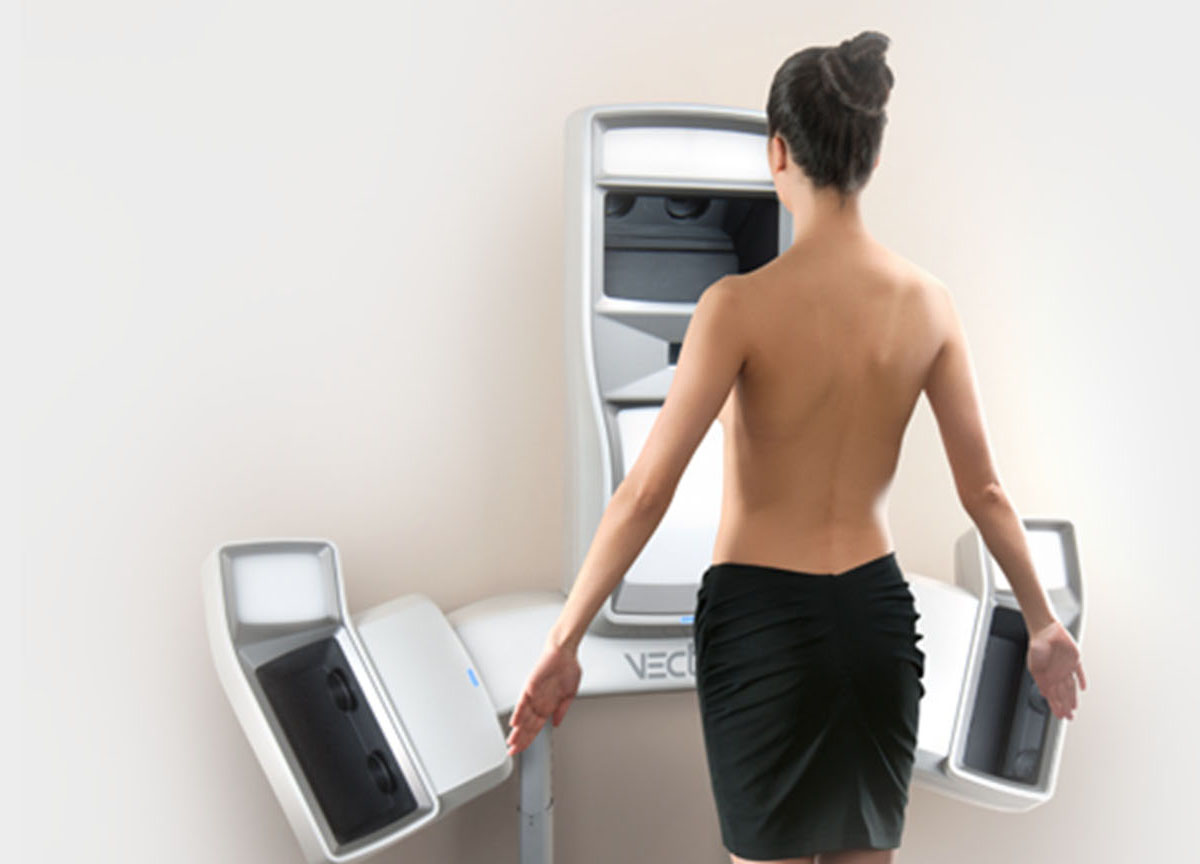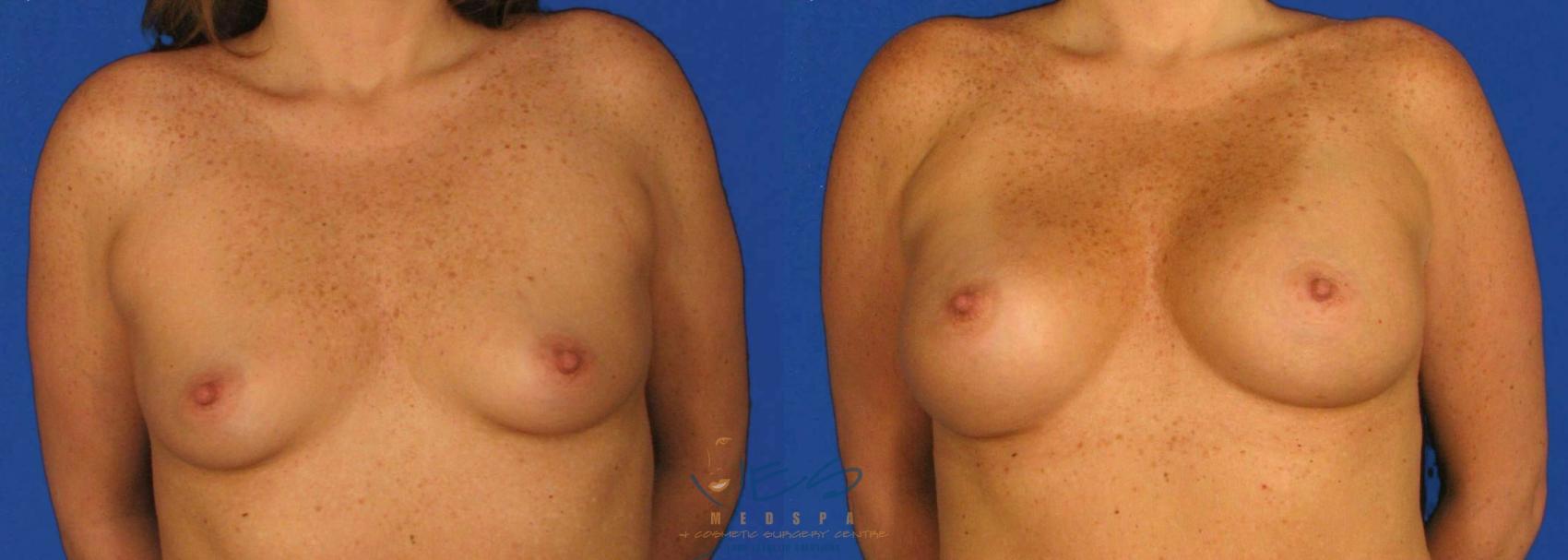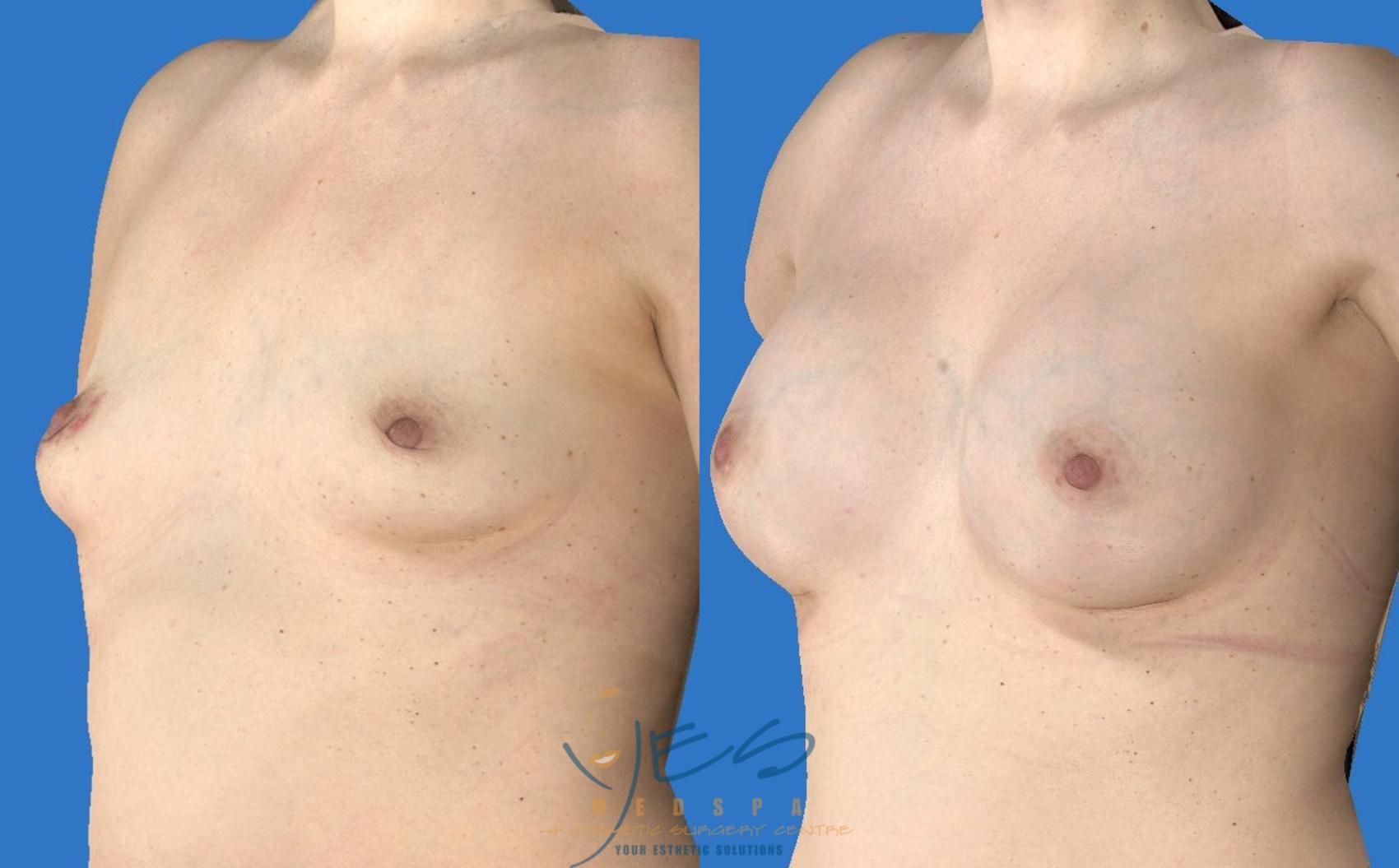YES Medspa & Cosmetic Surgery Centre
301-8837 201 Street
Langley, BC V2Y 0C8
Phone: (604) 888-9378
Cosmetic Surgery: Mon–Fri: 8:30 a.m.–4 p.m.
Medspa: Mon & Thu: 9 a.m.–7 p.m., Tue, Wed, Fri: 9 a.m.–5 p.m.
Breast Augmentation FAQ
There are many options for breast implants available to our Vancouver patients. While Dr. Mosher will thoroughly go over your choices with you during your consultation, you may find it helpful to review the answers to common questions ahead of time.
To learn more about your options for breast enhancement, request a consultation with Dr. Mosher at YES Medspa & Cosmetic Surgery Centre in Langley. Or you can call his office at
(604) 888-9378 to schedule an appointment.
Breast Augmentation
Before & After Photos
WARNING:
This feature contains nudity. Please click OK to confirm you are at least 18 years of age and are not offended by such material.
In the News
What do I need to know about BII and BIA-ALCL?
Women considering breast augmentation, or those who already have breast implants, may have read or heard about Breast Implant-Associated Anaplastic Large Cell Lymphoma (BIA-ALCL). BIA-ALCL is a rare illness linked to certain implants, which have been the subject of many news stories and discussions in the news and social media. The condition has been researched extensively and Dr. Mathew Mosher wants to ensure our patients are fully informed about the remote risk of BIA-ALCL and breast implant illness (BII) when considering breast augmentation. Your health and safety is of the utmost importance to us here at YES Cosmetic Surgery. Knowledge of the current scientific understanding of implants and associated risks should help alleviate some concern generated by social media and news coverage. To learn more, click here.
Candidacy
Is breast augmentation right for everyone?
Breast augmentation is not for every woman, but a lot of women feel that their breasts are not proportional, they are too small, or they have lost their shape following weight loss or after having children. Most women considering breast augmentation learn during consultation that they are good candidates for the procedure. Being in good general health is necessary, and any concerns about breast health problems must be resolved before undergoing any cosmetic breast surgery. Of critical importance is patients must have realistic expectations about what is possible for them. Patients must understand that their anatomy will influence the recommendations and in some cases limit their options. Patients who have carefully considered their decision and are choosing to get breast implants because they want them — and not because someone else is urging them to augment their breasts — are typically the best candidates.
What are benefits of a breast augmentation?
Breast augmentation isn’t just for women who want larger breasts. The procedure can boost a woman’s confidence and improve her body’s proportions. Many women with breasts that are different sizes — which is fairly common — get breast augmentation to balance and enhance asymmetrical breasts. Additionally, breast augmentation can restore the volume of breasts that appear deflated after a woman has children or loses a significant amount of weight.
Working With Dr. Mosher
What happens during a breast augmentation consultation?
Many breast augmentation patients arrive for their consultations already quite well-informed about their choices and the procedure. But the consultation remains a very important step, both in helping you choose your Plastic Surgeon and allowing you and the surgeon to have an open and honest discussion about goals and expectations. The consultation also includes a physical examination, so we can offer the best options for your body.
What if I don’t know what I want?
Most women considering breast augmentation have a general idea of their goals, but aren’t sure about the various options they have regarding the procedure. Besides the size of implants, there are choices involving the incisions, the specific location of the implants, and the type of implants used. Dr. Mosher carefully explains the benefits and limitations of each option and may recommend certain choices based on the goals you describe. Ultimately, the decisions are made collaboratively after Dr. Mosher offers his best advice based on his experience and expertise.
Choosing Breast Implants
How do I choose the size implant that’s right for me?
One thing to keep in mind is that the larger the implant, the less natural the breast will look and the more problems you may have in the future. These problems are directly related to the added weight of the implant and the stretching of your tissues to accommodate it. With that in mind, here are some things you can do to aid your decision:
- Talk to women who have had breast augmentation to learn what they have experienced and whether they are happy with their augmentation outcomes. Ask how their augmented breasts have influenced their confidence and any impact the surgery has had on their physical activities.
- Try putting inserts into your bra at home to get a sense of the size you are looking for. Although this is only a “ballpark” sizing exercise, a small zip-top plastic bag filled with rice and tucked into a sports bra can act as a visual aid. Use a measuring cup that indicates milliliters to measure how much rice you added to the bag to achieve the look you liked.
- State of the art today is using Vectra® 3-D imaging, which displays a three-dimensional photo of your chest and can create a simulation of possible results. This technology is unrivaled, and patients find this to be an extremely useful tool for understand your breasts and your options. After narrowing down the options, you will be given an opportunity to try on implant sizers as one more method of visualizing the final results.
What types of breast implants are available?
Your current options include only silicone or saline implants that are approved by Health Canada. All implants have a soft outer shell made from silicone. The shell is filled with either a cohesive silicone gel or a saline solution. Saline implants are inserted while empty and are then filled with sterile salt water after they are in position. Silicone implants are pre-filled with a cohesive gel, which clings to itself, thereby reducing the chance of silicone outside the breast if the outer shell is damaged. Dr. Mosher will explain the pros and cons of each type and recommend the implant that he feels is best for you.
Are silicone implants as safe as saline?
Many studies over the past 20 years have confirmed that medical grade silicone gel used in the currently available breast implants is not a measurable health risk. All breast implants, even those filled with saline, have a silicone shell. All studies have confirmed similar safety, and both saline and silicone gel implants come with a lifetime warranty from the manufacturer. The most popular silicone gel-filled implants have been approved in Canada for more than 10 years and have been used safely in other countries for years. Each silicone gel implant brand and style is filled with cohesive silicone gel that has a “jello-like” consistency. MemoryGel® implants from Mentor® have slightly a less firm gel filler. Both implant manufacturers’ products have been studied extensively and are approved by Health Canada for breast augmentation in women who are 22 years of age or older.
What implant shapes are available?
Implants come in 2 basic shapes: round and contoured. A contoured implant is often referred to as an anatomical shape or tear-drop shaped device. These are used more commonly in reconstructive surgery and can deliver excellent projection with less fullness or bulging in the upper breast. A round implant often will produce a more prominent upper breast contour. All breast implants change shape slightly with changes in posture and with stretching out of the breast over time. Consequently, the difference in augmented breast shapes of these 2 styles of implant is often quite subtle. Currently, Dr. Mosher recommends round implants for the majority of patients.
The Procedure
What should I expect from a breast augmentation?
Breast augmentation surgery is performed under a light general anesthetic administered by a Royal College Certified Anesthesiologist, personally selected for their skills and empathy by Dr. Mosher. General anesthesia is essential to permit a precise and pain-free procedure. Your procedure will be performed in one of the most advanced and accredited ambulatory surgery centres in Canada, located right adjacent to our office. Dr. Mosher and his highly skilled team will complete your procedure in about 1 hour.
Where are the incisions made during a breast augmentation?
The choice of incision location is a personal decision but is influenced by your anatomy and the type of implant chosen. Dr. Mosher offers the option of incisions made along the lower edge of the areola (periareolar incision) or on the underside of the breast near where it attaches to the chest (inframammary fold incision). The most popular, and the incision with the lowest risk of complications, is an incision in the inframammary fold (breast crease).
Are implants placed over or under the muscle?
During breast augmentation, Dr. Mosher creates a small pocket where he inserts the implant. He can place the implant either behind the existing breast tissue, but above the pectoral muscle, or behind the tissue and muscle. A third option is to insert the implant above the muscle but behind the fascia, so it appears partially covered by the muscle. Several factors influence the optimal choice for each patient, but the most important are the amount of existing breast tissue and the type of implant being used. Dr. Mosher can recommend what he believes will provide the best results for you.
Recovery
Is recovering after breast augmentation surgery painful?
Surgical techniques now used during breast augmentation reduce the trauma to tissues, making the recovery more comfortable and limiting bruising and bleeding. There is slightly more discomfort when implants are placed under the muscle, but the recovery remains easier and faster than most women anticipate. Dr. Mosher introduced the “rapid recovery” breast augmentation surgery protocols in 2003. Since that time several thousand women have followed our “Recipe for Recovery” that includes unique surgical finesse, early mobility, no drains, showering within 24 hours and a return to less physical work within 1 week.
When can I return to normal activity?
Most patients are back to their normal activities within 1 week, regardless of the implant position chosen. Patients can wear normal clothes and shower within 24 hours. Most patients manage well with non-prescription strength medications and easily follow our unique “Recipe for Recovery” program. Normal activities that do not involve vigorous exercise can be considered after 3 to 5 days. Vigorous exercise and sexual activity is restricted for 4–6 weeks.
What activities are safe after breast augmentation?
Implants are designed to withstand all normal activities, including strenuous exercise, contact sports, recreational scuba diving and sexual interactions. Once you have healed completely, you can resume all of your usual activities. Our general advice is that you should be as protective of your breasts after augmentation surgery as you were before. Common sense indicates that you should support your new breast weight with well-fitted garments as often as possible, particularly during exercise. For patients with implants partially behind their pectoral muscles, we will provide guidelines for specific exercise and strength training as you progress through recovery.
Will I lose sensation in my breasts after surgery?
Most women experience some loss of sensation for a few months after surgery. In most cases the sensation returns to normal. About 2% to 5% of women will have permanent numbness of the nipple or the area adjacent to the incision. There is less risk of permanent nipple sensation change with a breast crease incision or an axillary (arm pit) incision, or when smaller implants are used, or when implants are placed behind the muscle. Not surprisingly, there is more risk of permanent numbness when larger implants are selected and with revisional breast implant surgery. In rare situations, women can experience increased sensitivity to the point of discomfort, but this usually improves over time.

VECTRA® 3D Imaging
Get a preview of results with the state-of-the-art VECTRA 3D imaging system. You’ll feel more confident going into surgery after getting a “sneak peek” of your potential outcomes.
Learn MoreDoes breast augmentation increase my risk for breast cancer?
No. It does not change your risk for developing breast cancer or your chances of survival if you do develop the disease. You do need to have special views taken of your breasts when mammography is completed. Implants that are behind the muscle tissue generally make mammograms easier to perform. Having breast implants can make mammography more difficult resulting in more images being taken or other modalities such as Ultrasound or MRI being recommended.
Do breast implants increase my risk of developing ALCL (Anaplastic Large Cell Lymphoma)?
Although ALCL that occurs anywhere in the body is extremely rare, there is a new entity called Breast Implant Associated ALCL (BIA-ALCL) recognized by Health Canada and the FDA. Review the information in our BIA-ALCL resources. With an improved understanding of this disease, only women who have textured surface breast implants appear to be at risk. For women with these devices, their lifetime risk of developing BIA-ALCL is estimated at 1:3000 – 1:10000. To put this into proper perspective with other cancers, women have a lifetime risk of developing breast cancer estimated at 1:9 and colorectal cancer of about 1:25. For women who have textured breast implants, Health Canada does not recommend prophylactic removal of their implants.
Results
What if I think there is a complication?
The majority of women who get breast augmentation are very happy with the results, but complications can occur. Minor complications often heal without further intervention but surgery is required to address early complications such as a hematoma or later complications such as implant rupture, implant malposition and capsular contracture. A review of breast augmentation complications performed at YES by Dr. Mosher involving more than 500 patients indicated that 3% of patients underwent another operation on their breasts in the first three years. Complications included hematoma (0.5%), implant malposition (1%) and size change requests (0.5%). This “complication” and re-operation frequency is almost 7 times less than the complication rates most commonly quoted from the published literature.
How long do implants last?
Even though the newer breast implants are more durable than ever, they still aren’t considered lifetime devices. The idea that implants need to be replaced every 10 years also doesn’t really apply at this point. Approximately 10% of breast implants rupture during the first 10 years. Studies demonstrate some variability between implant styles and brands. However, there is not a superior brand or device. Individual statistics for recommended implants will be discussed during your consultation.
What happens if my implants rupture?
When a breast implant ruptures, there are no health concerns identified with this event. Saline-filled implants that rupture are easilty noticed by patients. Patients with silicone gel breast implants can experience “silent ruptures”. To detect these, it is recommended to have an Ultrasound of MRI every two years beginning 3-5 years after augmentation. If the implants remain intact and you are happy with your breasts, no replacement surgery is indicated. The implant manufacturers each offer a lifetime implant replacement warranty if their devices rupture.
Back to Top







